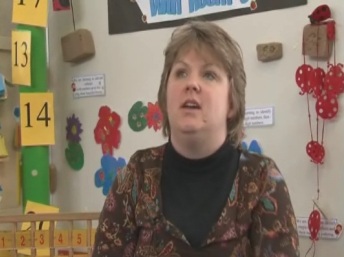|
Effective teachers provide students with opportunities to work both independently and collaboratively to make sense of ideas. |
Students need space and opportunities to think and work independently in a quiet, purposeful learning environment that is free of distractions and that involves engagement in high quality tasks. Students also benefit from opportunities to work collaboratively and co-operatively, in pairs, small groups and whole class situations. Learning to listen respectfully, to evaluate one another’s ideas and perspectives, and to engage in mathematical argumentation are key outcomes. Arranging for learning in these ways is deliberate and should be carefully planned.
Many of these stories detail carefully structured, time efficient programmes which include opportunities for listening, thinking, answering, writing, questioning and critically evaluating each others’ ideas in a respectful way. Many have arranged for learning by providing a routine and regular programme structure.
Some have also highlighted the benefits of teachers applying these principles to their own work. Several comment on the value of having designated time allocated for lesson evaluation and responsive preparation, as well as the importance of collaborating with other colleagues who are directly involved in the students’ mathematics learning.
Exemplars:
|
Our initial programme consisted of lessons that involved a mixture of memory activities, knowledge building through the use of COSDMBRICS, followed by strategy teaching. Lessons started with 10-15 minutes of memory activities/games, approximately 20 minutes of knowledge building and 20 minutes of addition and subtraction strategy teaching at the end.
(Royal Road School)
|
|
‘Arranging for learning’ which was really important to the success of this project. The time that I had available after each session meant that after my reflection time I was immediately able to plan the next lesson and had the time to find and make the resources necessary to make the next lesson a success. Having the opportunity to make new games specific to the focus of a lesson was really helpful as there is not the time to do that on a daily basis in the busy lives of teachers.
(St Brigid's School)
|
|
The quiet area for these students was also highly important as they could concentrate on what they were learning and had no outside pressures to distract them. One student commented on how nice and quiet it was and that it made it easier to concentrate. They also loved the games and activities provided. They thought that they were easy games that they enjoyed and didn’t feel the pressure that they ‘had’ to learn something.
The repetitive nature of the programme was another aspect that contributed to raising student achievement. There was the repetition of teaching and timetabling and the students knew that they would be seen at the same time each day and knew the routine of the programme. The format of the programme with clear beginning, middle and end, enabled the students to be comfortable with the expectations. They had no moments of panic as there were no surprises.
(School "C")
|
|
Teaching mathematics everyday with no negotiation is a definite requirement if there is to be any possibility of accelerating learning for students who are working below expectation.
(Nga Iwi School)
|
(Sir Douglas Bader Intermediate)
|
|
Each session followed a similar format.
(Owairaka District Primary)
|
|
This maths intervention was set up to parallel the way that reading intervention is done in the school. Key features of the programme were intensity, high expectation, and knowing the learner exceptionally well to locate their learning edge and teach precisely at that point. The lead teacher of numeracy does both the reading intervention and the maths intervention programme. (Linwood School)
|
|
The sessions followed a basic plan/routine
(Lytton Street School)
|
|
I used the SPRING method where the lessons were structured like this:
(Maoribank School)
|
||||||||||||||||||
|
Following a set routine daily: the children knew what to expect, we had a clear focus, there was no down time or wasting time, the children knew from the very first lesson they were there to learn and every minute counted. The lessons were fast paced, with high but achievable expectations, and the children were all thinking and highly engaged at the task at hand. (Awapuni School)
|

